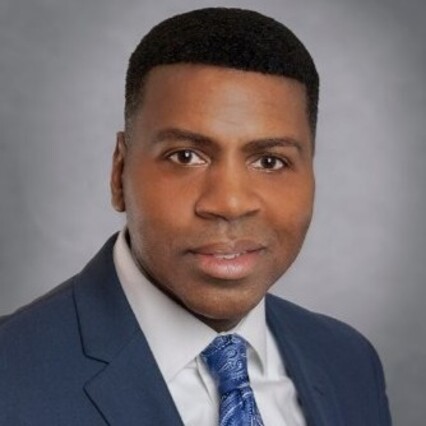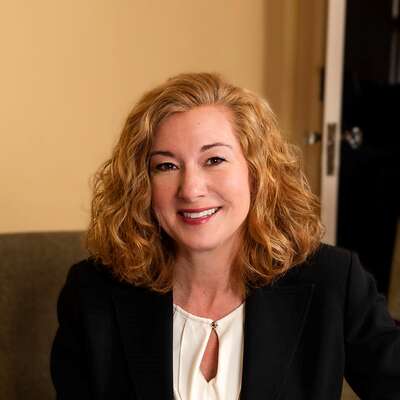A Q&A with CASE’s Rob Henry on Dismantling Systemic Bias
A passionate higher education executive, Rob Henry, Vice President of Development, Culture and Talent at the Council for Advancement and Support of Education (CASE), advocates for equitable access to education and the integration of diversity, equity, inclusion and belonging (DEIB) into organizational culture. In conversation with Boyden Managing Partner, Lisa Vuona, Rob discusses pay inequity and how organizations can address systemic bias, with a focus on the not-for-profit sector.

Rob Henry, Vice President of Development, Culture and Talent at the Council for Advancement and Support of Education (CASE)

Lisa Vuona, Managing Partner, Boyden United States
Vuona: What are your thoughts on the issue of pay inequity?
Henry: Pay inequity is a systemic issue, particularly for women, that sits squarely in diversity, equity, inclusion and belonging or DEIB. Because of discriminatory practices, women make over 30% less than their male counterparts.
"Part of the problem is that there are a lot of preconceived notions out there - that women aren’t assertive enough during negotiations."
Part of the problem is that there are a lot of preconceived notions out there—that women aren’t assertive enough during negotiations. They expect to make less than men. They left the workforce to take care of their family, and anticipate having to work their way back up.
Notice that all of these assumptions are placed on women, versus looking at the biases of men. To get to the systemic issues, men need to ask themselves why women are making less.
The truth is that people have been conditioned as kids to believe that men are the breadwinners and women do less, and therefore should be paid less. As a society, we have an unconscious bias toward males working harder than females. This starts at a very young age. Jimmy Kimmel aired a segment asking kids, ‘Do you think women work as hard as men?’ The responses are staggering. Most of the kids really believe men work harder than women.
Our job now is to dismantle this process. In the nonprofit sector, this could mean setting standard rates for all major gifts officers, for example.
We also need to help men understand their role in pay inequity. This is not just for women—it’s everyone’s issue. What man really wants his daughter or wife to be paid less than they’re worth?
Vuona: If pay inequity is an issue, should organizations be required to post salary ranges?
Henry: The work needs to happen prior to posting salary ranges. Organizations should start by examining their salary philosophy.
The first step is to identify what’s important to your organization, such as the right of all individuals to be paid equally and fairly, and for people with different lived experience to be valued as much as their white male peers.
Second, we have to realize that posting a salary range is often misleading. If an organization is looking for a gift officer and the range is $80 to 120k, they need to acknowledge that in most cases, they will never offer anyone the top end of that range. They should also understand that a salary range of $80 to 120K actually represents two different gift officers with different types of experience.
There are also negative consequences to posting a salary range. If someone is making $65k and they see a range of $100 to 120k, they may not apply, even if they’re qualified. Women and people of different lived experience might assume this is out of their league or consider themselves unqualified for the role.
Vuona: How do ‘required’ skillsets affect hiring people of color?
Henry: Organizations must reflect on what is actually required to do the job. If you list in the requirements that applicants ‘must have experience securing six-figure gifts,’ then you immediately disqualify individuals from smaller shops or smaller advancement programs. The byproduct is excluding people of color who could build powerful relationships and secure larger gifts, but have not been given that opportunity.
Recruiting and attracting people of color needs to occur prior to posting the position, beginning with the job description: Is the language inclusive? Does it embrace diverse audiences? This is especially important if the organization is looking for someone who can engage diverse constituencies.
There are other questions to consider as well. For instance, does the posting focus on skills or the number of years in a position? Does one hold more value than the other? In terms of formal education, is a master’s degree really necessary to do the job?
Vuona: Where should equal opportunity and diversity, equity and inclusion come into the job description?
"...highlighting DEIB in the job description is only one small part of the equation. What’s important is how the organization puts its commitment to DEIB into practice."
Henry: We’ve all seen the Equal Employment Opportunity Commission statement in the footer on job descriptions. In most case this is the standard human resource language. But the commitment to DEIB should be embedded in the job description and the job posting, not an afterthought.
That said, highlighting DEIB in the job description is only one small part of the equation. What’s important is how the organization puts its commitment to DEIB into practice.
Job candidates can find out by asking their prospective employer whether they’ve completed unconscious bias training as a part of the interview process, and how prepared their team is to welcome and accept a person of different lived experience. They should also find out what their DEIB mission is, and make sure the employer understands the importance and benefits of having a diverse and inclusive team.
The DEIB journey is more than just hiring a person of color; it’s an ongoing discussion and internal shift in how an organization will support and include the employee of color throughout their tenure.





